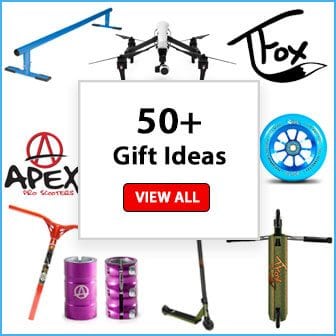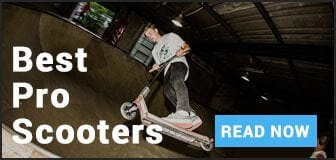Table of Contents
Snowboarding is one of the most extreme and exciting winter sports, and its popularity has soared in recent years.
It can be quite a hard sport to get into as it has many risks. But as long as you remain safe, secure and sensible, it can be an enjoyable pastime for everyone, both young and old.
If you want to get into snowboarding, you want to take some notes from the following article.
Material of Snowboards
Of course, the most important thing to understand is how the actual snowboard works.
If you are just starting out in this sport, it can seem quite overwhelming to figure out what board you need and why. But most sporting outlets will be able to provide you with a range of different snowboards for various different purposes.
Before we go into that, however, let’s look at how the snowboard is manufactured.
A snowboard is an exclusive piece of kit that requires a lot of work and construction to perfect. Snowboards are made from a majority of materials, that have been formed together in a sandwich construction.
Each layer of the snowboard has been crafted together to provide speed, snow reaction, floating abilities and excellent performance on the slopes.
Typically, snowboards are made from 8 different material layers, although some high-end models may include more.
1. Wood core
The central layer of the snowboard is usually made from wood. This central layer is the core of the board as it provides the power and strength to ensure safe riding.
Woods like poplar, obeche, and birch are most commonly used in snowboards. They will be laminated for maximum strength and shaped to fit the board’s flexible properties.
Some snowboards will use a foam core instead of wood for flexibility or aluminum honeycomb.
2. Topsheet
The upper layer of the snowboard is used to protect and will often be decorated in graphics, patterns or colors for fashion and individuality.
The top sheet can be made from various different materials, but will either be in a gloss or matte finish depending on personal tastes.
The only thing that really differs between these two finishes is the graphics. On glossy top sheets, the graphics will be sublimated on whereas matte finishes require screened-on printing. Quality will vary across brands.
3. Fiberglass
Fiberglass is a reinforced plastic that provides stiffness, strength, and durability to snowboards. This layer is placed right above the core to strengthen it.
Glass is the standard material composite to be used in snowboard construction, and fiberglass is less expensive, making it the most popular version.
Fiberglass is also lighter, making it more suitable for transportation, and is flexible, so the boards are able to bend.
4. Steel inserts
Steel is inserted on top of the board to attach the bindings to the central layers. These inserts can differ across brands and board models, due to the different mounting patterns.
There are four main hole pattern types: The Channel, 3D, 4×4 or 4×2.
5. P-Tex base
P-tex is a form of ultra-high, molecular-weight polyethylene (plastic) that is used to reinforce the snowboard’s base.
This plastic is solid, durable and can be repaired should it be damaged on the slopes.
The p-tex layer can be improved with waxing, which should be done throughout winter to ensure the board maintains its quality and is slippery on the slopes.
P-tex is an ideal material for snowboards as it is dense, abrasion-resistant and has low-friction properties for fast gliding.
6. Metal Edges
Metal is reinforced around the edges of every snowboard for grip in icy conditions.
These metal edges will dig into the snow to ensure balance and security. There are two types of metal edging, reinforced which ends at the nose and tail of the board, and steel edging. Steel edges are used in high-quality snowboards as it covers the full circumference of the board for maximum control.
7. Glue
A resin system that is used to bond the layers of glass laminates to secure the board’s structure.
8. VDS (Rubber foil)
This layer is commonly known for its vibration dampening properties, to ensure smooth sailing when snowboarding. However, this layer actually works as a bonding agent to keep all layers of the board together.
Type, Length And Weight Of Boards
When shopping for the best snowboard for yourself, you must consider your own abilities on the slopes, your height and weight.
Type of Board
Depending on what kind of snowboard you need or what kind of skills you have on the slopes, you can choose from a range of shapes and rocker types.
The most common types of snowboards to suit different abilities are:
· Freestyle Boards
Designed to be used for tricks, jumps and to hit jibs on the slopes.
Freestyle is a fairly broad term and can be used to describe a wide range of skills, meaning that these boards have to be able to handle almost any activity in the snow.
If you are looking for something more specific, some freestyle boards have been designed with specific moves or tricks in mind. To find the best one for you, consider the flex of the snowboard. They can range from soft or hard depending on how flexible you need it to be.
· All-Mountain-Freestyle
These kind of boards are a hybrid of freestyle and all-mountain boards and are suitable for serious riders.
All-mountain-freestyle boards are designed to be used on mountains, either for straight gliding or tricks. They are more flexible than their mountain-board counterparts and can be used in snowboarding parks.
· All-Mountain
Designed to do a little bit of everything, these boards are ideal for expert snowboarders who want to take their tricks from the park to the mountain.
These boards are typically in the middle ground of flex, directional shape, and stance.
· Freeride
Freeride boards are like the big brother to most snowboard styles. They are aggressive and stiff directional boards that have been specifically designed to ride fast, carve snow well and work in harsh conditions.
They are not suitable for most freestyle tricks as they have an incredibly stiff flex for power and speed.
· Aggressive-All-Mountain
This style of the snowboard is ideal for mountain riding and tough conditions. They are designed for expert snowboarders who want to gather some serious speed and power.
They are very similar to Freeride boards but specifically constructed for mountain riding.
· Power Boards
Power boards are specialist snowboards for fast and controlled riding. They often come in a tempered directional shape, with a pointed nose, for expert floatation and speed.
Length of boards
To determine what length of snowboard you need, you must consider your body weight and what kind of riding you do.
Your weight is an incredibly important factor in finding the best board length for your snowboarding needs, as you need to ensure the best strength and security for your skill.
Many sporting outlets have their own snowboard size charts to help you find the best one for you out of their catalogs. You should always consider this closely, especially when shopping online for snowboarding equipment.
A great place to start is by considering what you want to use the snowboard for. If you are a freestyle rider, then you should really be looking at longer boards. Most of the tricks and jumps you will perform either in a park or on the slopes will require a long length board for speed and maintain stability.
Weight
In snowboarding, it is important that you consider not only the weight of the actual board itself but also how your own body weight will impact the sport.
Body Weight
Each board style, no matter what brand or supplier, comes with its own recommended weight limits. These weight limits are only guidelines, so don’t worry too much if you are slightly over what is recommended for your ideal board.
Just consider that these weights have been determined based on what will provide maximum speed and control of the snowboard when on the slopes.
Weight of Board
Depending on their intended purpose, snowboards can vary in weight. It all comes down to what material is used on the actual board and the binding that is present.
When looking into the weight of your snowboard, again consider what you will be using it for. For example, freestyle boards are going to be lighter than all-mountain boards because they need to be able to be lifted into the air to jump or hit jibs.
Bindings Type
Bindings are an integral part of snowboarding as they are what provides the direct contact between yourself and the board.
There are 2 types of binding, and you can determine which one will be most suitable for your skillset.
Strap-In Binding
Strap-In binding is the most common kind available on the market or slopes. This binding is secure and relies on two separate straps to keep your feet attached.
This kind of binding has straps across your ankle and toes that can be adjusted to fit your feet and boots. It is recommended that you try on your snowboard with your boots on before you get onto the slopes, so the straps are already in place.
This particular kind of binding comes with a high back to secure your boots in place. For the most part, this back does not move, making these kinds of bindings challenging to secure in a hurry. Of course, the back can be adjusted, but only in small movements going forward or backward.
Most beginners need to be sitting down before they can secure themselves into a strap-in binding.
Speed Entry Binding
This kind of binding, also know as rear entry, is – as the name suggests – the quickest way to get secured onto your snowboard. It is popular among both experts and beginners. However, it is a newer form of binding meaning it isn’t available on a lot of boards out there.
Speed entry binding is super quick to get into as the high back moves in a drawbridge action. Simply pull it backward and slide your foot onto your board.
The straps for this kind of binding only need to be adjusted once when you first put them on and once after you have taken them off. This process is so simple that many experts can put these kinds of boards on standing up
However, these boards are certainly better for experts as many beginners may find the process quick tricky to grasp at first.
Trick Guide
There are so many different tricks that can be performed using a snowboard, as long as you are willing to put in the practice. If you are a beginner, find yourself a nice big lump of snow to secure soft landings and get to work.
Here follow the four best tricks to start out with:
· Ollies
Ollies are the foundation of may aerial tricks and are often one of the first moves beginners learn on the slopes.
This trick is brilliant for beginners to snowboarding to practice as it will get you used to being airborne as well as teaching you how to land. Just ensure that you master your landing technique early on to prevent developing bad habits. These could cause serious damage when you move to bigger tricks.
Try them out on small, gentle slopes where there isn’t much traffic.
· Manuals
Manuals are also known as wheelies or pressures and are yet another foundation trick. Manuals are a great way to practice balance and landing as they are relatively easy to pick up.
They are performed by balancing the tail or nose of your board into the snow and jumping between the two positions. Helpful to develop when you ride or land from bigger jumps.
· Butters
Now you’ve mastered manuals, you can start developing butters. This trick is a spin that relies on balancing either the nose or tail of your board on the snow.
This trick can be incorporated into other moves and jumps, as long as you get your balance right.
· Frontside 180s
Frontside 180s are essentially a step up from ollies. Once you can control your own weight and your board during ollies, then you can start to learn how to do frontside 180s.
This trick can be performed either from your normal stand or switch and works by essentially transferring between the two. As long as you have mastered your landing, you can start working on frontside 180s before developing to backside 180s and even more jumps, jibs and moves.
What to Wear
Snowboarding is an extreme sport, which means you need special equipment in order to participate safely and securely.
Your snowboarding uniform is one of the biggest safety cautions you can take, and it must cover your full body, top to toe.
· Helmet
When riding the slopes, you need to ensure that you are protecting the most vital organ in your body – the brain.
Snowboarding can be quite dangerous at times, and you must always be prepared for falls. Especially if you are a beginner, protecting such a vital and sensitive area is so important.
When purchasing or renting a helmet, you need to make sure that it fits, is comfortable and covers all of your head.
· Goggles
Snowboarding goggles protect your eyes from snow flare, snow debris, and wind while riding.
This is yet again another essential safety caution you must take before attempting to ride the slopes. Not only will goggles protect your eyes, but they will ensure that you can clearly see what you’re doing and avoid any disruptions as you ride.
· Bodywear: Sallies and Pants
When snowboarding you need to be able to protect your body from not only falls and injuries but also the cold climate.
Base layers of snowboarding clothing are essential thermal layers that will keep your body and hands warm no matter the weather. These layers will be worn under your jacket and pants and should be flexible enough to allow you to move freely.
If you are looking for thermal layers, avoid cotton as this is neither breathable nor waterproof. Instead look for synthetic materials or wool as these have better temperature control and are comfortable.
It is just as vital to have a secure outer layer to protect you from the elements when snowboarding as well. Your pants and jacket should be wind and waterproof for maximum protection when on the slopes.
They should also be made from a breathable material that can maintain body temperature, no matter what the weather is like. Good snowboarding pants will also be waterproof to prevent snow from melting inside the leg and causing injury or discomfort.
Top Snowboarding Locations
Now you’ve got your kit, and you’ve practiced your skills, you’ll be ready to get out there on the slopes and ride.
No matter what skill set or abilities you have within the sport, the most important thing you need from a location is of course snow. In these modern times, snow can be manufactured even if the climate doesn’t allow for it.
What is better for snowboarding, artificial or real snow?
Well, many research studies suggest that expert snowboarders and snow sportspeople prefer the powdery, fluffy snow that naturally falls from the sky. Natural snow tends to settle powdery, which is ideal for snow sports. Snowboards can glide smoothly over real snow whereas this action may not be as smooth on artificial snow.
Man-made snow is made from frozen water goblets, which settle wet and will eventually become slushy over time.
So if you want to take yourself and your friends or family away on a real snowboarding trip, then you want to look into somewhere that has a steady flow of snow.
The best locations for snowboarding can differ depending on your ability.
Locations for Beginners
As a beginner, you want to develop your snowboarding skill set in a location that has multiple ramp lengths. This will allow you to start small and work your way up.
You also want a resort that has lots of soft snow to cushion your falls and is budget friendly, considering you are just starting out in the sport.
· French Alps
The Alps are home to various purpose-built ski resorts that allow practice time for a variety of snow sports, including snowboarding. A lot of these locations may not be as attractive as you would see on television, but that is why they are usually cheaper and therefore better for beginners.
· Bulgaria
Bulgaria certainly is not known for its extensive ski resorts, which makes it an ideal location for beginner snowboarders. This location is quiet, giving you more room to develop and practice your new found skills.
· Italy
Italian resorts are renown for their beauty, charm and almost perfectionist control over the snow levels. A vast majority of ski and snowboarding resorts in this part of the world are snow-positive, and many have their own snow-making facilities to ensure you are never without.
Locations For Experts
Expert snowboarders want a lot of action, plenty of competition and room to practice their skills. By visiting these countries, you’re guaranteed to have it all.
· Canada (Whistler)
There are two linked mountains at this site, which are becoming increasingly popular with keen snowboarders across the world.
Canadian sites offer steeps couloirs and high bowls for speed, racing, and power when riding. These locations are ideal for experts because they allow for hard tricks, spins, and jumps.
· Switzerland
With multiple steep slopes and runs that are not groomed, Switzerland is the perfect place for expert riders who have excellent control of their boards.
· France
The skiing terrains in France are incredibly popular tourist destinations and allow for serious riding. With various tracks, in incredibly long lengths and bumpy terrains, there is no better place to improve your control of the board!
Where To Stay
Depending on what kind of snowboarding trip you want, you could stay in a:
· Ski Lodge: for a true mountain experience, where you are totally immersed in nature. Suitable accommodation for large groups.
· Cottage: a cute and natural location that is still surrounded by nature, but on a smaller scale. Ideal for small families and suitable for a trip that is not consumed by sports.
· Resort Hotel: to be right in the center of the action, you will want to stay on site. These hotels usually have gyms and saunas to improve your fitness throughout the trip, as well as sporting equipment rentals.
Ski Pass Prices
A ski pass is an essential document for all those who are on a snowboarding holiday. It shows that you have paid to use the ski or snowboarding slopes and have access to the lifts.
It must be carried with you at all times and can be attached to your outerwear.
Prices for ski passes vary depending on whereabouts in the world you are and what age you are. Resorts in Europe are typically cheaper than those in the US or Canada, but of course, there are always exceptions.
Ski passes can be purchased on a daily basis or by the week. It is recommended that you buy a weekly pass if you are a serious snowboarder as this is better value for money.
Safety Guidelines
As with every sport, snowboarding comes with a long list of safety guidelines that you must abide by before and during hitting the slopes.
Many resorts have their own set of rules, all following the FIS regulations, but just for general guidance you should consider:
· Maintaining personal fitness to reduce the risk of injury
· Practice your skills before you go away
· Get covered by specialist insurance
· Ensure you have all of the right kits and that you are comfortable
When on the slopes you should:
· Stay on the tracks
· Keep an eye on weather conditions
· Never ride alone
· Do not push yourself too far
Emergency Protocol
As snowboarding is such an intense sport, it is always best to be prepared for the very worst case scenario. Being prepared is the best way to prevent any serious injuries or mishaps.
All resorts and snowboarding parks have specially trained staff who are able to deal with any kind of mishap on the slopes. If something does happen, you should contact a member of staff immediately.
Always remember to take note of emergency contact numbers, both from inside the resort and for the local emergency services. It is much better to be safe than sorry!
Be mindful to:
· Follow International Ski Federation (FIS) rules and regulations
· Have all necessary safety gear
· Be aware of your environment
· Follow the rider in front
· Keep emergency numbers safe and on your person at all times
Conclusion
There we have it! Here is everything you need to know about snowboarding before you hit the slopes. If you need any more information, feel free to browse our site as we’re sure we can help you.
Have fun out there and remember to stay safe.
If you liked the article, please leave your feedback.




